Seakeeper 18 Installation Manual (90672-2); S/N 18-234-2475 to Current
2.2 Selection of Seakeeper Installation Location

The Seakeeper should be installed aft of amidships to minimize high acceleration loadings due to hull/wave impacts during operation at high speed or in large waves. If the only possible Seakeeper location is forward of amidships then the installer should have Seakeeper review the installation location prior to finalizing the design.
Seakeeper can only assess installation location regarding its impact on Seakeeper operation and serviceability. Seakeeper cannot determine how the installation location will affect the vessel static or directional stability other than cyclic roll reduction. The Installer is responsible for considering the Seakeeper’s effect on the Center of Gravity location, trim, overall stability, and performance of the vessel.
The Installer is solely responsible for ensuring that the Seakeeper is properly located and installed on the vessel foundation with an adequate margin of safety for the specified design loads and vessel operating characteristics.
Selection of mounting location of the Seakeeper should consider the following desirable features:
- Adequate service access for scheduled maintenances and overhaul of the Seakeeper 18 is required. See Figure 3 and Drawing No. 90544 – Seakeeper 18 Bolt-In Installation Details for service clearance requirements.
- The Seakeeper should be installed in a dry space to minimize effects of corrosion.
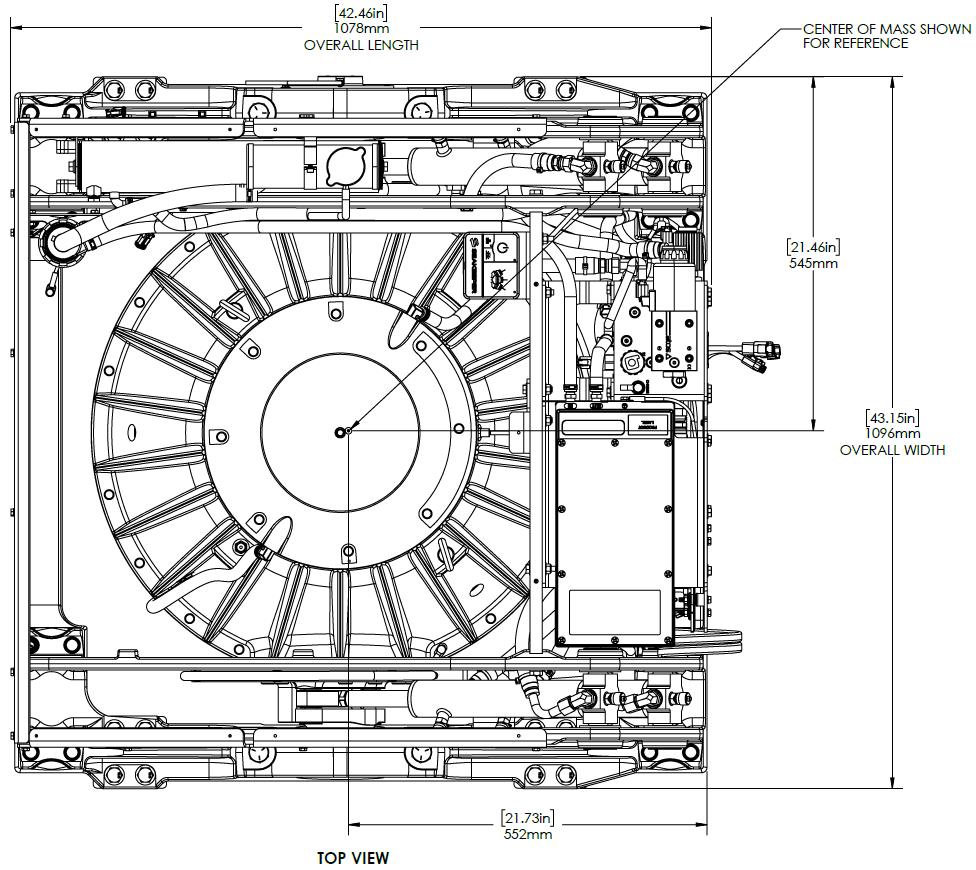
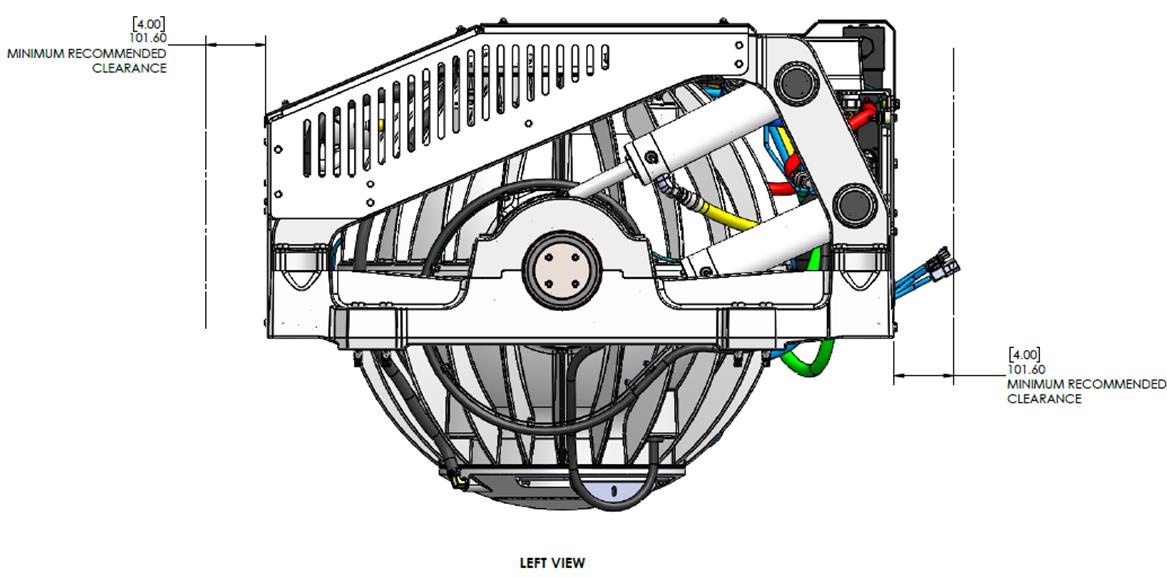
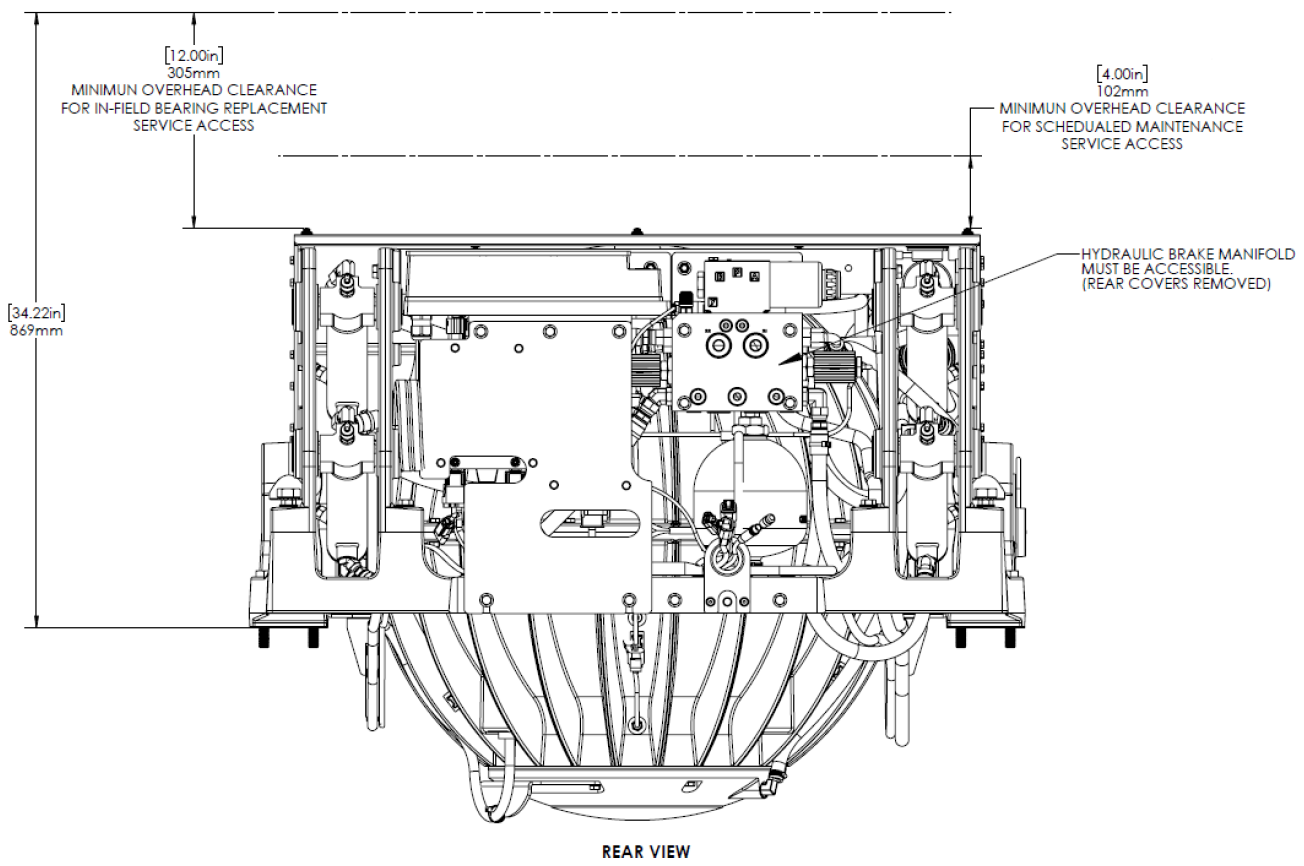
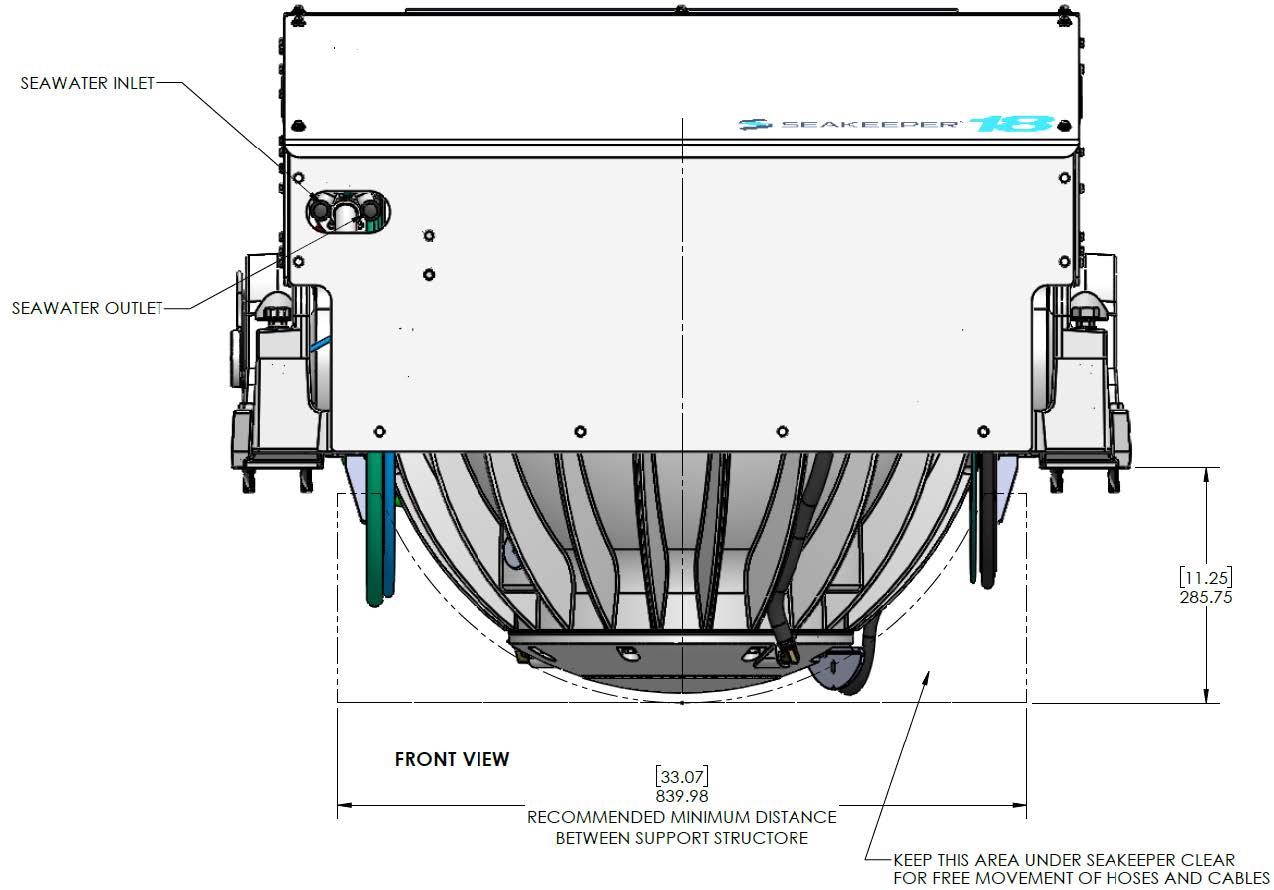
VIEWS SHOWING RECOMMENDED SERVICE CLEARANCES AROUND THE SEAKEEPER FOR USE OF HAND TOOLS, EASE OF MAINTENANCE, INSTALLATION AND PROPER OPERATION.
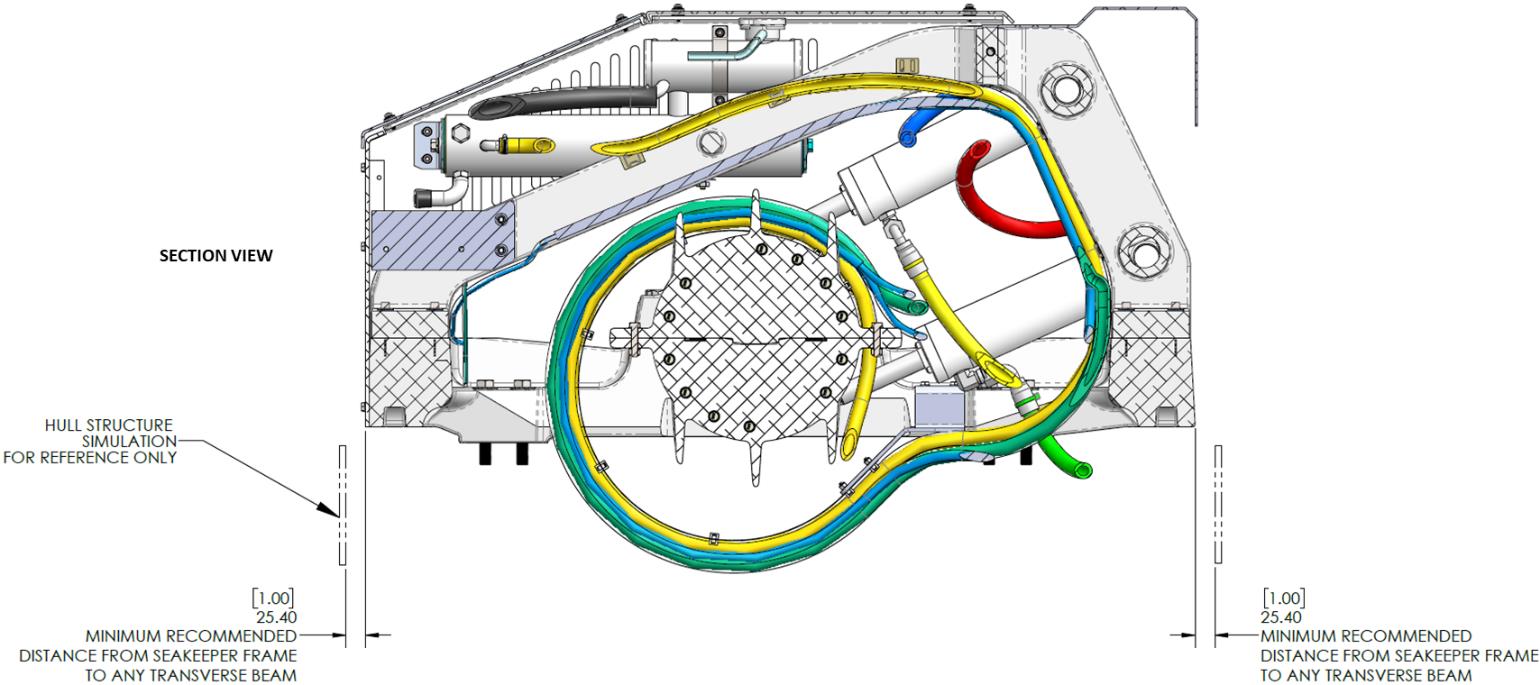
Refer to Figure 4 for required clearances to transverse beams. If a transverse beam is located under the forward brace, it must be 1 in. (25 mm) from the edge of the Seakeeper to provide the necessary clearance for the swing of the motor power cable during the Seakeeper’s precession. Clearances aft of the Seakeeper are shown to provide access for regular scheduled maintenance.
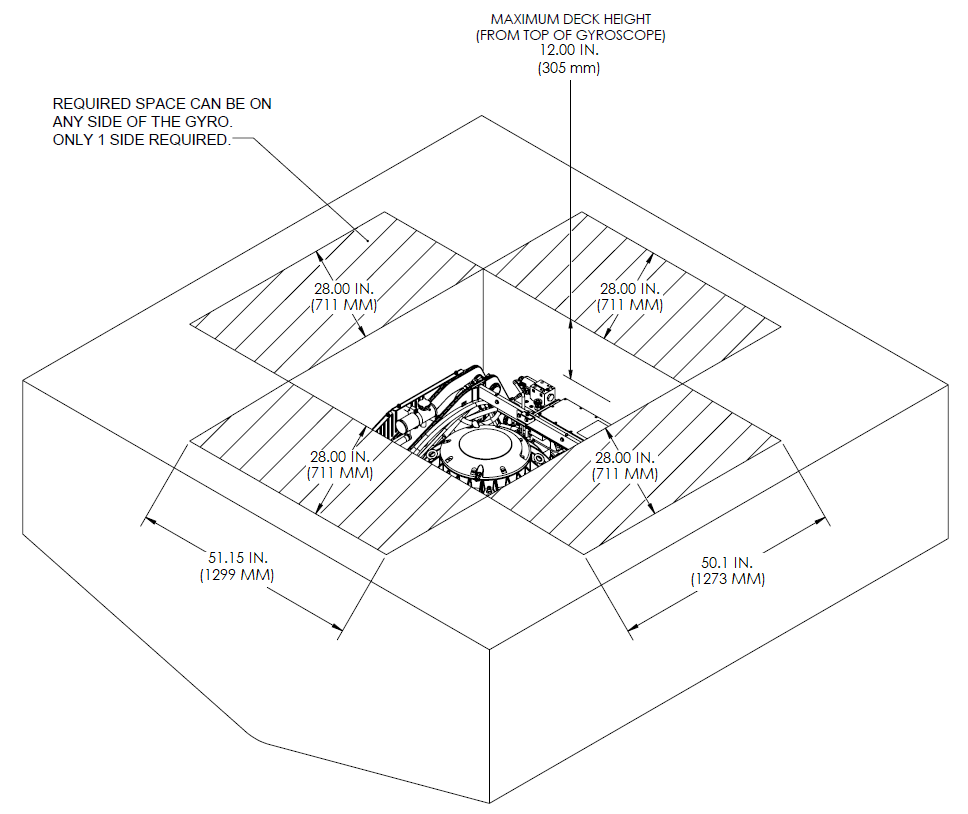

2.2.1 Noise/Soundproofing
Seakeeper 18 noise has been measured under steady state conditions (no wave load) in Seakeeper‘s lab and in our test boat. The steady state noise is typically <68 dBC at 1 meter. As the frequencies emitting the highest sound pressures are low (like other marine machinery), it is recommended that the Seakeeper be installed in an enclosed space such as a machinery space, lazarette, or bilge. If additional noise reduction is needed sound proofing insulation can be used in the space around the Seakeeper unit.